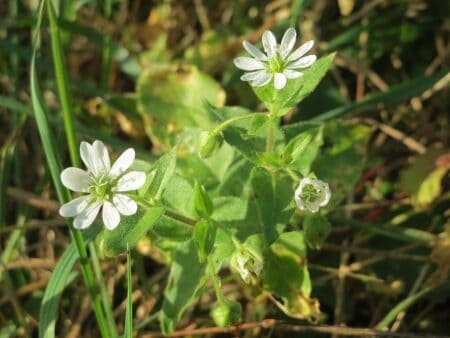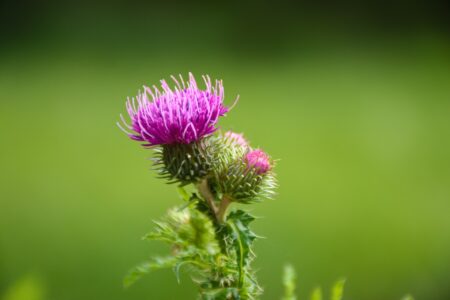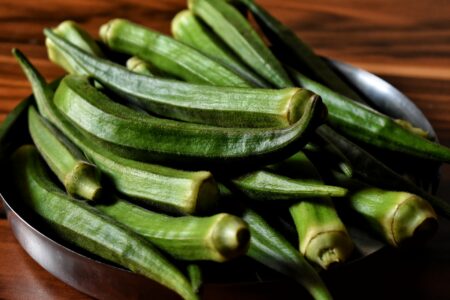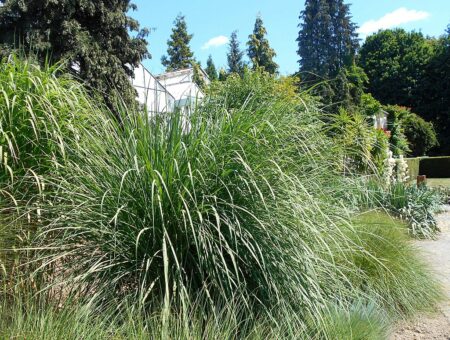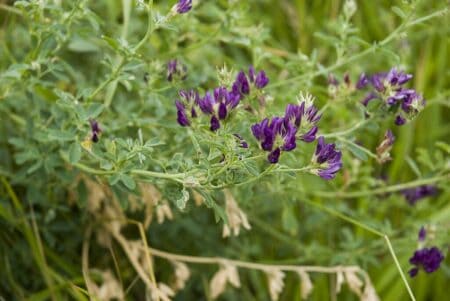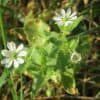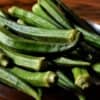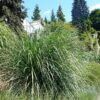Incorporating ornamental trees into your garden is a bright landscaping idea. Besides beauty, showy vegetation adds value and a habitat for wildlife. But very few gardeners can select the shrub that blends with their compounds.
And that’s where trees with heart-shaped leaves come in. They can fit along the street, fence, and parkland. Their cordate leaves and fragrant flowers attract compliments.
The post brings you the top 5 ornamental trees with cordate leaves. Read on and know the species that blend with your garden soil type and USDA zone.
Top 5 Trees With Heart-Shaped Leaves
Below we’ll list the top 5 trees with heart-shaped leaves (in our opinion).
Tree #1: Silver Linden (Tilia Tomentosa)
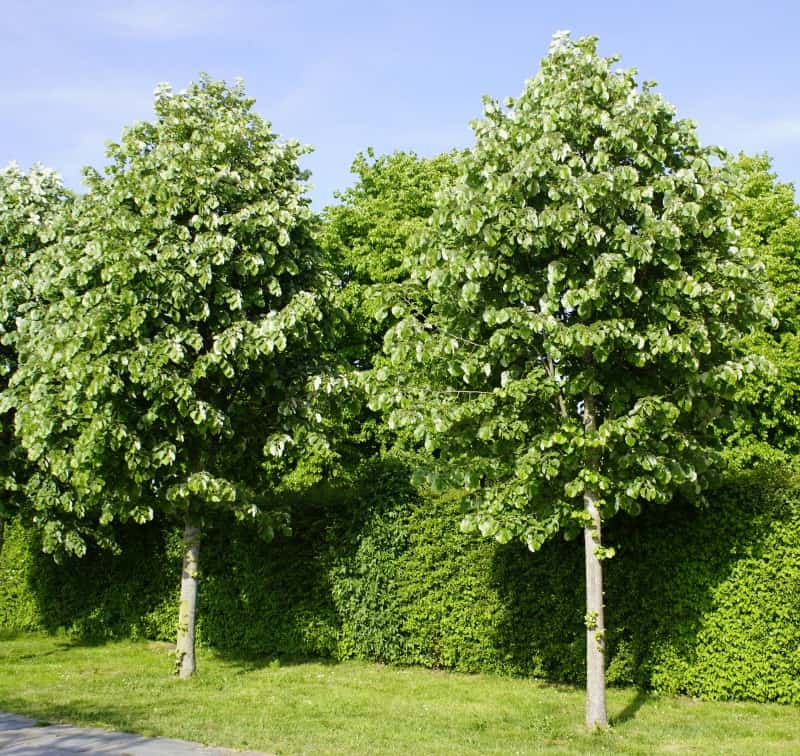
Essential facts about Silver Linden:
- Stands 70 feet tall and 50 feet wide
- Thrives in well-drained loam soil
- Requires full or partial sunlight (2 to 6 hours)
- Registers rapid growth rate
Silver Linden is also called silver lime, white lime, and European white lime. Silver lime belongs to the Malvaceae family. But it is native to western Asia and southeastern Europe.
Under favorable conditions, Silver Linden forms a pyramidal structure and thick canopy. Grow it at the center of your lawn, and it adds beauty.
The deciduous ornamental tree makes a good choice for a parkway or street. Its tender and light gray bark feels smooth. And as it ages, the bark grows ridged.
White lime thrives in the drained, loamy soil. Also, you need to plant it in the part of the garden that receives either partial or all-day sunlight.
Silver lime possesses large coarse leaves with a silvery underside and serrated margins. The leaves may stretch up to 6 inches long. You can spot the white-creamy flowers between June and July. Even though white lime has flowers that attract bees, its fruits do not interest wildlife.
Tree #2: Eastern Redbud (Cercis Canadensis)
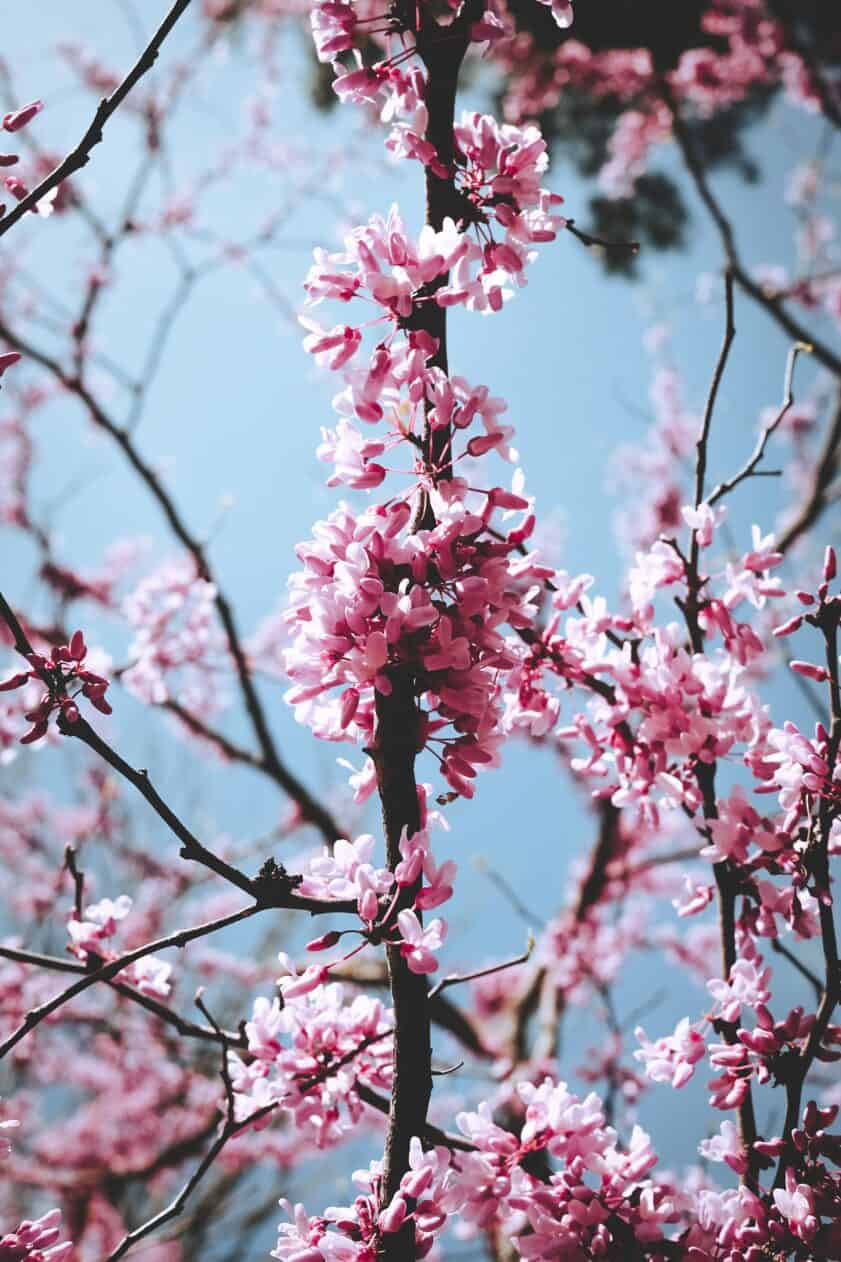
Essential facts about Eastern Redbud:
- Height of 20 to 30 feet and width of 25 to 35 feet
- Requires clay or sandy soil
- Needs full sunlight or partial shade (2 to 6 hours)
- Registers medium to rapid growth at a tender age
- Fits USDA planting zone 4B to 9A
The Eastern Redbud is also called American Redbud, Mexican Redbud, or redbud tree. It’s of north America native and belongs to the Fabaceae family.
Unlike other trees, Redbud’s showy flowers bloom before the leaves appear. So, it stands out as a specimen in a wooded landscape and as an understory tree. Unlike the Silver Linden, it’s shorter and possesses a flat round crown.
The Eastern Redbud grows well in both clay and sandy soil of average fertility. When the American redbud blossoms, it attracts pollinators and songbirds.
Redbuds can not survive drought and heat. Also, the heart-shaped leafed tree requires very minimal root disturbance. Hence, it’s best to plant the ornamental tree in a permanent location.
Its scaly trunk is dark brown on the exterior but turns orange as you dive deeper. The Mexican Redbud has cordate leaves that measure 3 to 6 inches in length and width. In autumn, the heart-shaped leaves turn pale yellow. It’s best for the borders of the shrub.
Tree #3: Southern Catalpa (Catalpa bignonioides)
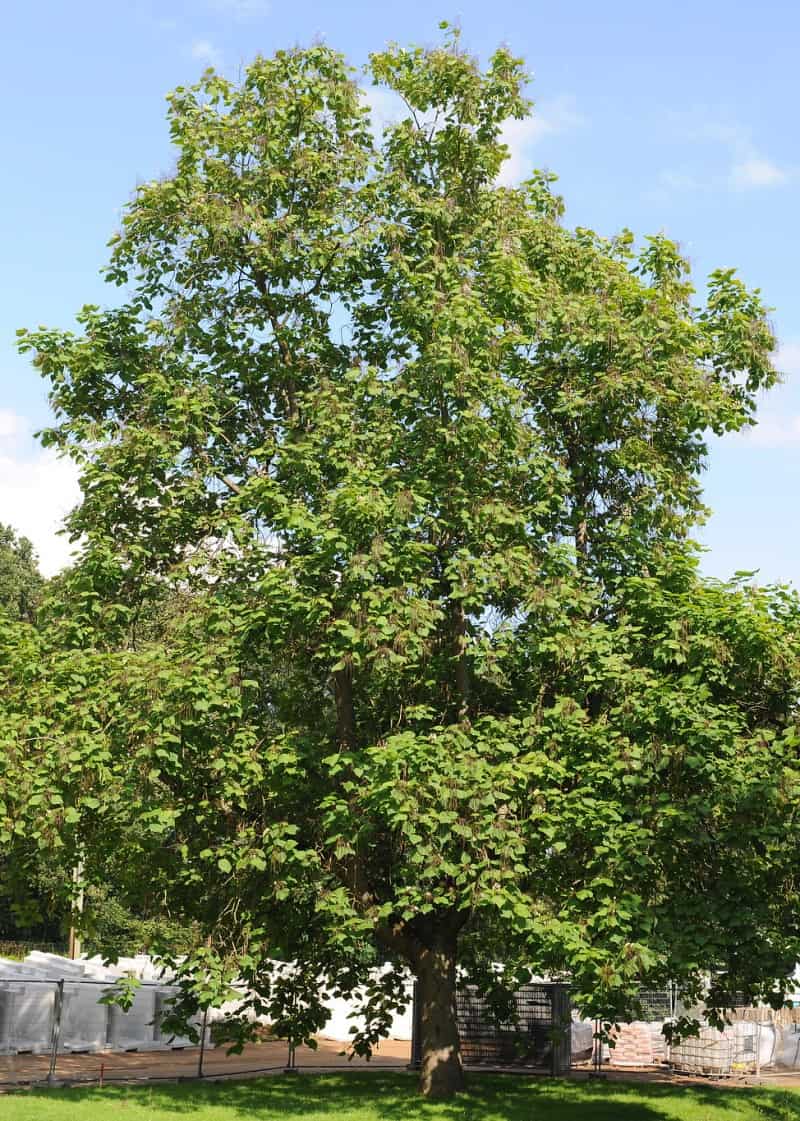
Essential facts about Southern Catalpa:
- Measures 30 to 60 feet tall and 20 to 40 feet wide
- Ideal for well-drained loam soil
- Thrives in partial shade or full sunlight
- Registers rapid growth rate
- Suitable for USDA planting zone of 5a- 9a
- Belongs to the Bignoniaceae family
The Southern Catalpa is also known as the cigar tree or bean tree. Cigar trees’ key features include rapid growth rate, irregular shape, and long life. Yet, its deep root gives it drought resistance and soil-stabilizing ability.
Although the bean tree displays crooked branches, its white flowers produce a sweet smell. You can plant it in either a partial shade or a completely sunny garden area.
And owing to its towering height and wide shape, it makes a good shade, specimen, or street tree.
The deciduous Southern Catalpa tree has zig-zag stems and crooked branches. Further, when you crush the leaves, it registers an unpleasant smell.
Tree #4: White Mulberry (Morus alba)
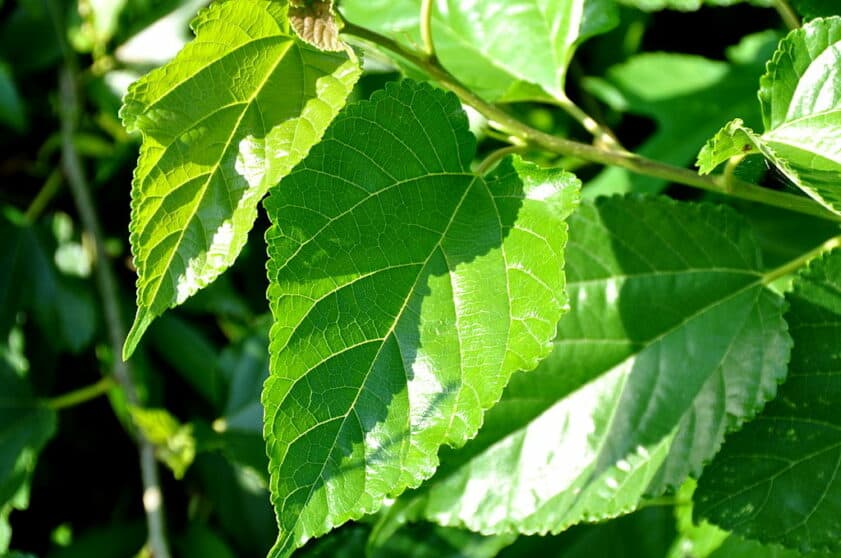
Essential facts about White Mulberry:
- Stands 30 to 60 feet tall and spreads out 20 to 40 feet wide
- Thrives in well-drained silt
- Requires all-day sunlight
- Best for USDA planting zone 4 to 8
- Belongs to the Moraceae family
The Morus alba tree is also known as White Mulberry. Though it’s native to China, it has spread to America, Asia, and the southern part of Europe. Mulberry produces sweet purple fruits that attract birds and other wildlife.
From a tender age, the deciduous tree registers rapid growth and is resistant to drought. But, some gardeners shy away from it as the tree requires high lawn maintenance.
Besides being glossy, the mulberry leaves measure about 3 to 6 inches long and 1 to 3 inches wide.
The outstanding features of the mulberry tree are the clustered fruit and grayish trunk. As it grows old, the shallow furrows on the bark deepen and curve. Also, silkworms love to feed on the leaves of the Mulberry tree.
Tree #5: Caucasian Lime (Tilia x euchlora)
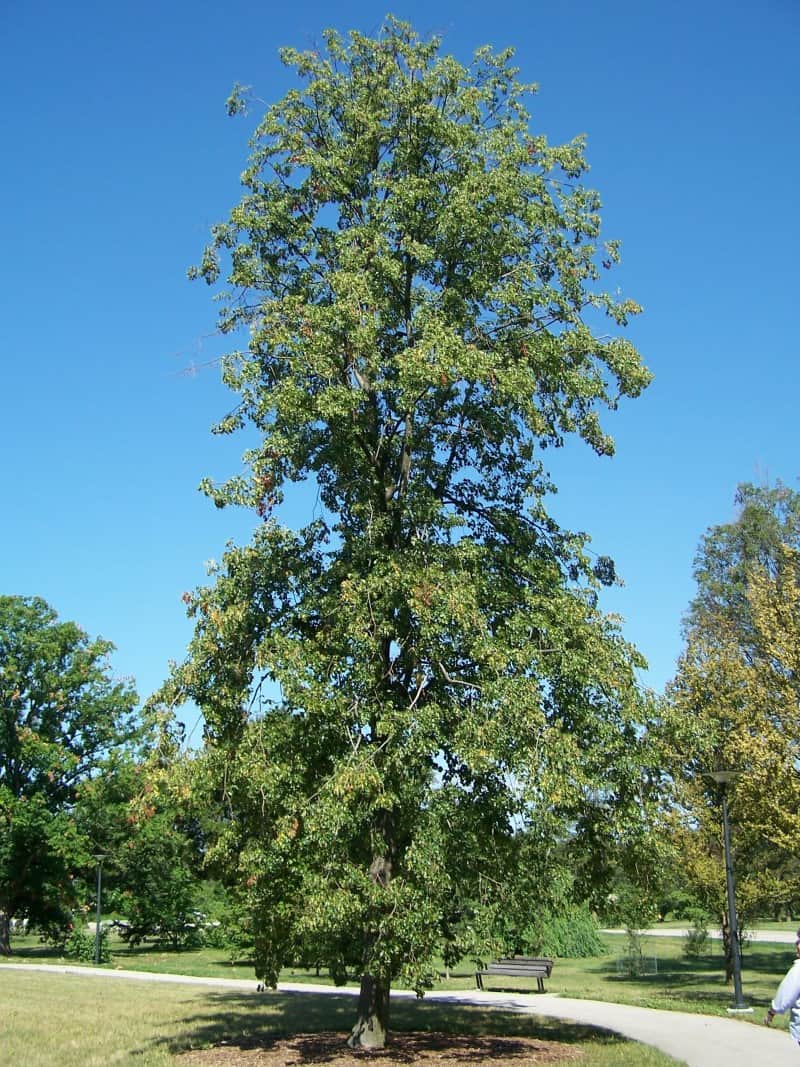
Essential facts about Caucasian Lime:
- Stands 40 -60 feet tall and 20- 30 feet wide
- Tolerates full sunlight or partial shade
- Suitable USDA zone 3 – 7
- It grows well in well-drained clay soil but survives many soil types
Another outstanding street or parkland tree of long lifespan is the Caucasian lime. Other names of the tree are Crimean Linden, Caucasian Linden, and basswood.
A mature Crimean Linden tree presents a pyramidal shape, a height of 40 to 60 feet, and a width of 20 to 30 feet. Its dense crown and hanging branches give the tree high resistance to wind.
When you plant the Caucasian lime in groups, they form admirable ornamental shade on the lawn.
At the top, the Caucasian Lime tree presents dark glossy green leaves but is pale on the underside. Usually, the leaves measure about 3 to 6 inches. When it blossoms, the flowers are pale yellow and cluster in a group of 3 to 7.
Conclusion
Your habitat doesn’t matter. You can find trees with heart-shaped leaves that match your garden setting.
From short shrubs to towering trees, the choices are numerous. Make plans to incorporate the right tree and bring vigor and beauty to your lawn today.


